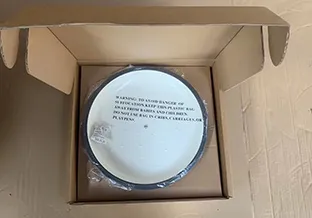
Exploring the Versatility and History of the Classic Dutch Oven for Cooking Enthusiasts
The Timeless Appeal of the Traditional Dutch Oven
The traditional Dutch oven is more than just a cooking vessel; it is a symbol of culinary heritage that has been cherished for centuries. Its design, functionality, and versatility have made it a staple in kitchens around the world, transcending cultural boundaries and evolving through generations. In this article, we delve into the unique characteristics of the Dutch oven, its historical background, and the various ways it can enhance our cooking experiences.
First, let’s explore the distinctive features of a traditional Dutch oven. Typically made from cast iron, these heavy-duty pots are coated either in enamel or left uncoated for a more rustic look. The thick walls and tight-fitting lid are designed to retain heat efficiently, allowing for even cooking and slow braising. This heat retention makes Dutch ovens perfect for making stews, soups, and casseroles, where flavors can meld beautifully over time. Additionally, many Dutch ovens come with a sturdy handle, which makes them suitable for baking bread or roasts, either in the oven or over an open flame.
The Timeless Appeal of the Traditional Dutch Oven
The name Dutch oven itself is believed to have come from the English recognition of the durable pots made in the Netherlands, which were often referred to as “Dutch.” As time progressed, various adaptations and designs appeared, with manufacturers like Le Creuset and Staub becoming synonymous with high-quality Dutch ovens. These brands have contributed significantly to the modern appreciation of this cooking essential, introducing colorful enameled versions that not only perform well but also look stunning in any kitchen.
traditional dutch oven

The versatility of the Dutch oven is one of its most appealing features. Home cooks can use it for a wide range of cooking techniques simmering, boiling, braising, baking, frying, and roasting. With a Dutch oven, one can easily prepare a hearty beef stew, bake crusty artisan bread, or simmer a rich tomato sauce—all in one pot. This not only saves time on washing dishes but allows for the development of layered flavors that are often difficult to achieve in other cooking vessels.
Moreover, the Dutch oven is beloved for its ability to transition seamlessly from stovetop to oven. This feature makes it an excellent choice for one-pot meals. Imagine searing a piece of meat on the stovetop, then adding vegetables and broth, covering it with a lid, and transferring it straight to the oven for a long, slow cook. The result is a tender, savory dish that shines with flavor and depth.
Another advantage of using a Dutch oven is its longevity. With proper care, a cast iron Dutch oven can last a lifetime or longer, becoming a cherished heirloom passed down through generations. The more one uses a Dutch oven, the more seasoned and non-stick it becomes, creating an almost magical cooking surface that is hard to replicate with other materials.
In conclusion, the traditional Dutch oven represents a perfect blend of functionality, history, and culinary artistry. It is a timeless kitchen companion, capable of nurturing flavors, supporting various cooking techniques, and offering an unparalleled cooking experience. Whether a seasoned chef or an enthusiastic home cook, using a Dutch oven can elevate the quality of your meals while creating lasting memories in the kitchen. So, dust off that Dutch oven, embrace its storied past, and explore the countless dishes you can create with this remarkable piece of cookware.
-
Season Cast Iron Perfectly with GPT-4 Turbo TipsNewsAug.01,2025
-
High Quality Cast Iron Cookware - Baixiang County Zhongda MachineryNewsAug.01,2025
-
Premium Cast Iron Pan: Durable & Perfect HeatNewsAug.01,2025
-
High Quality Kitchen Durable Black Round Cast Iron Cookware Pancake Crepe Pan-Baixiang County Zhongda Machinery Manufacturing Co., Ltd.NewsAug.01,2025
-
Cast Iron Cookware - Baixiang County Zhongda Machinery | Nonstick, Heat ResistanceNewsAug.01,2025
-
High Quality Kitchen Durable Black Round Cast Iron Cookware - Baixiang County Zhongda Machinery | Non-Stick, Heat Retention, DurableNewsJul.31,2025


